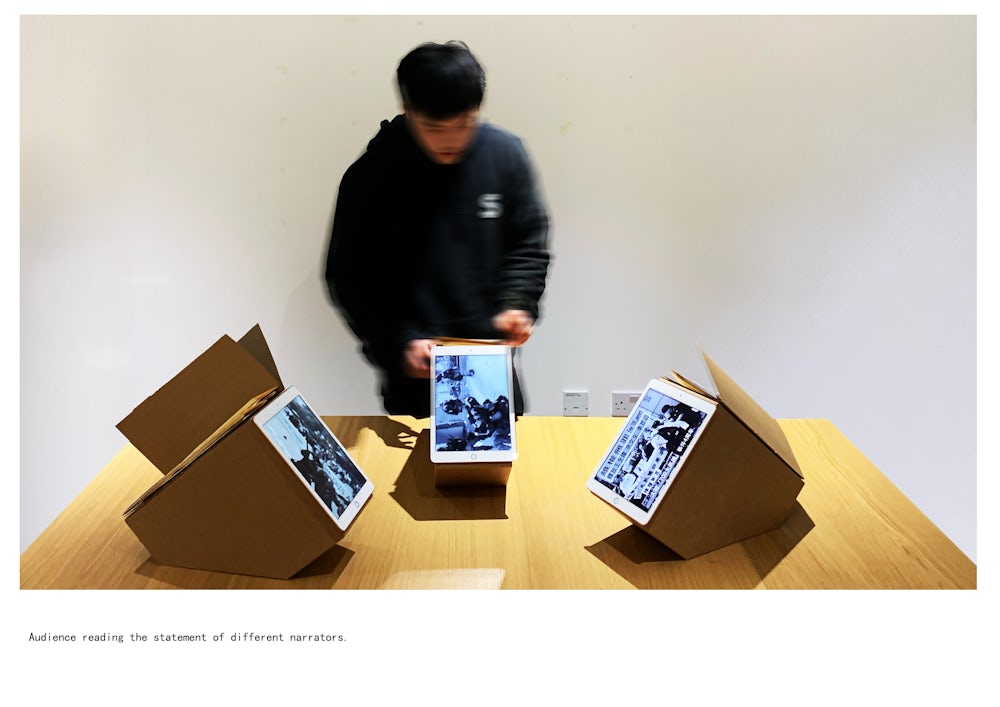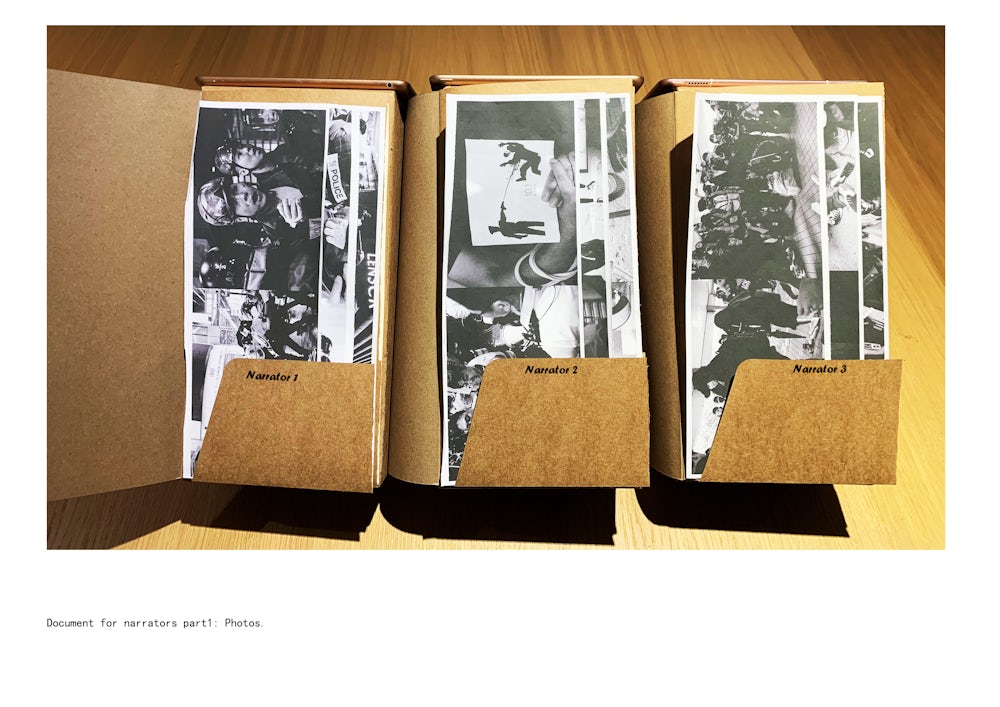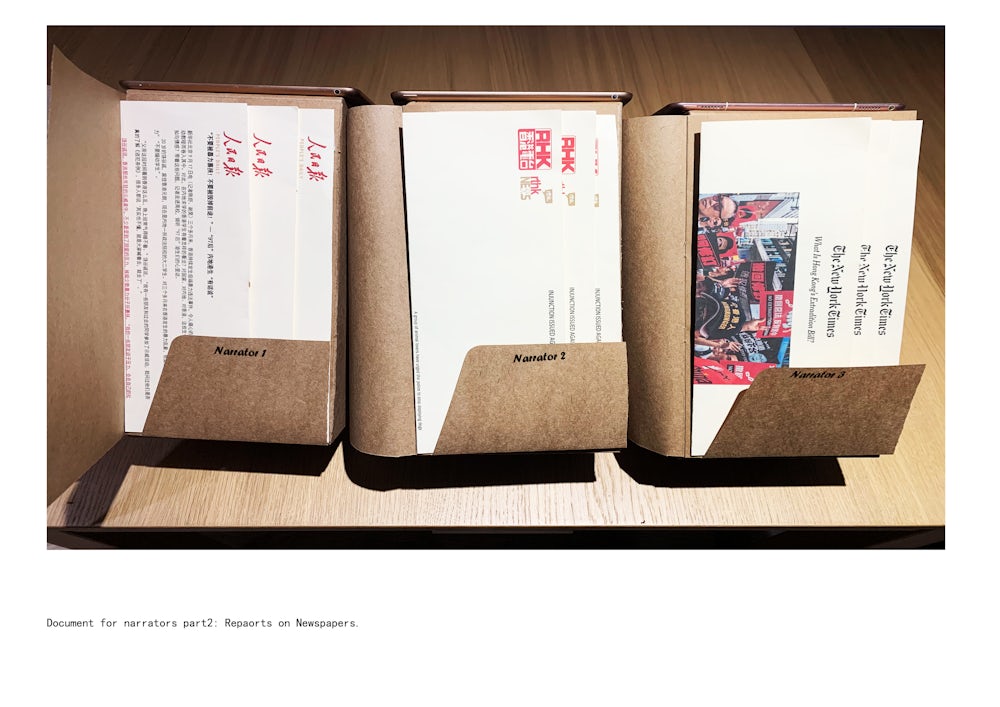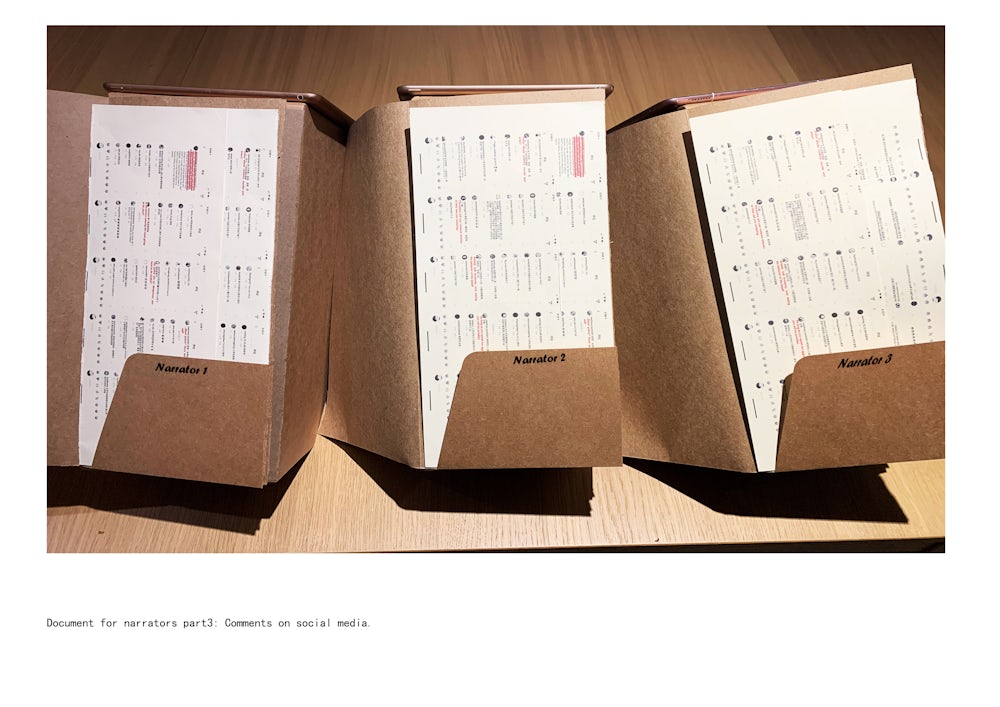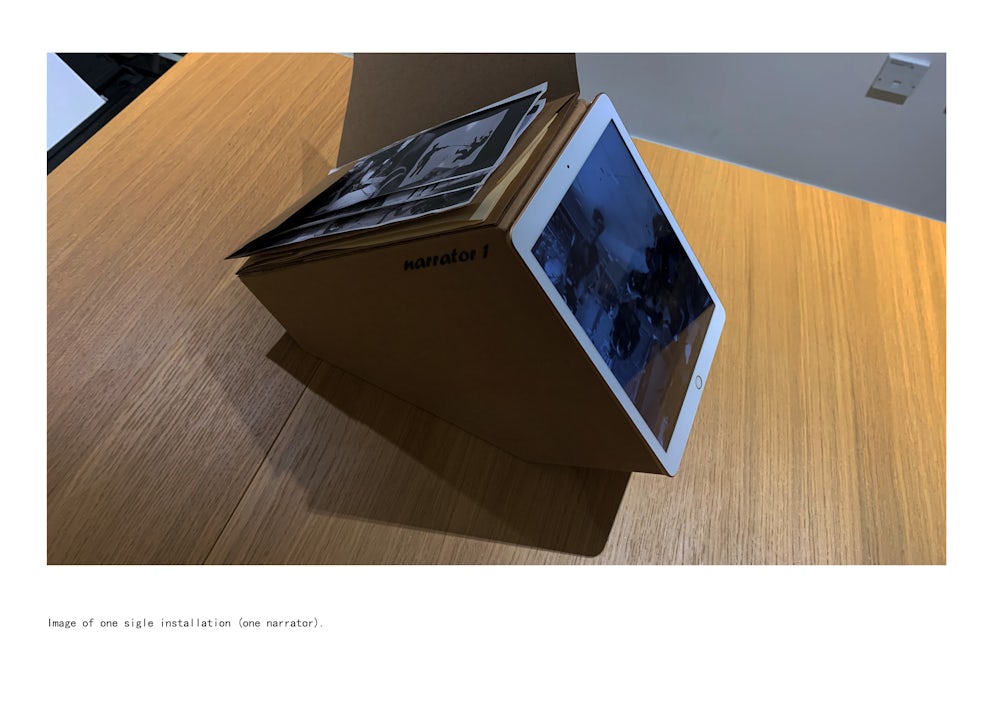Zining Zha
"The Real Victim (Truth or Perspective?)"
Section MS8, Tania Lopez Winkler
Keywords: narrative, installation, evidence
Introduction: In the case of conscious or unconscious, when it comes to interests, political positions, personal emotional appeals or accidental factors, individuals or groups will always hardly escape the subjective perspective when they act as both the medium and the audience for the same story. And sometimes, by using one-sided, incomplete, partial (or even fictitious) evidence and information, it is enough to build ‘the truth’ (which is actually just a perspective).
Aims: To explain that evidence, information, and clues (even fabricated) combined with the subjective speculation of the viewers are enough to build ‘the truth’.
Narrative approach: A special form of lawsuit/litigation
Particularities:
- Multiple defendants
- The lawsuit and counterclaim are exchangeable
- The jury will conduct the proceedings in a completely separate manner, depending on the identity position they choose.
Borrowed case: The aftermath of Hong Kong's amendment of fugitive law. (Several of the groups involved in the event will appear in different roles in the lawsuit.)
Characters/Narrators:
- Plaintiff & plaintiff defence (HONG KONG locals participating in the parade)
- Defendant1 (HONG KONG POLICE )
- Defendant2 ( HONG KONG CITIZENS )
- Defendant3 ( MAINLAND TOURISTS )
- Witness1 ( BBC )
- Witness2 ( NYT )
As is the case in the Japanese film Rashomon, different narrators have various ways of telling the same story. The focus of the records depends on a perspective that the narrator chooses to focus on and the ways in which events spread.
Media means to be used: an installation - video, sound, images, publications, questionnaire and posters.
Related cases:
- Reports from different media, publishers on the Hong Kong’s event about Fugitive Offenders bill (2019)
- Japanese film Rashomon (1950)



